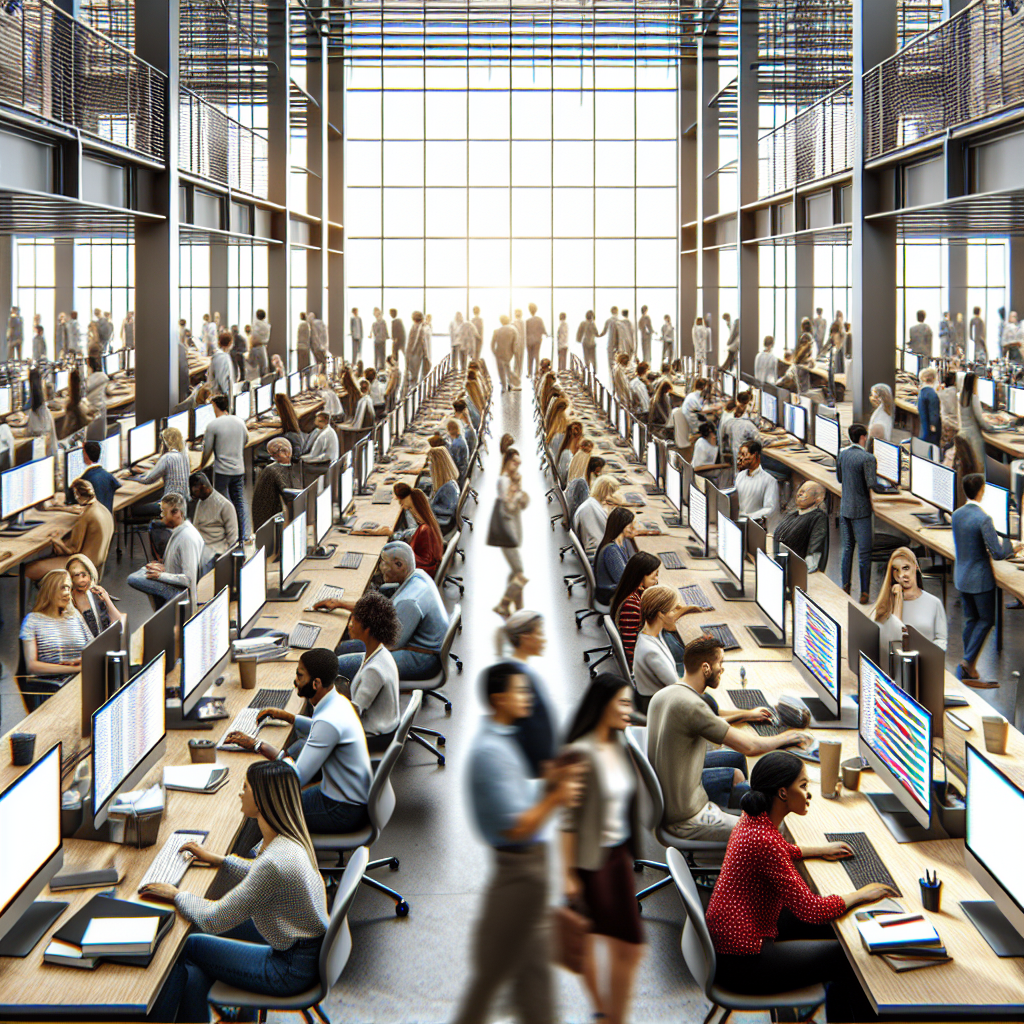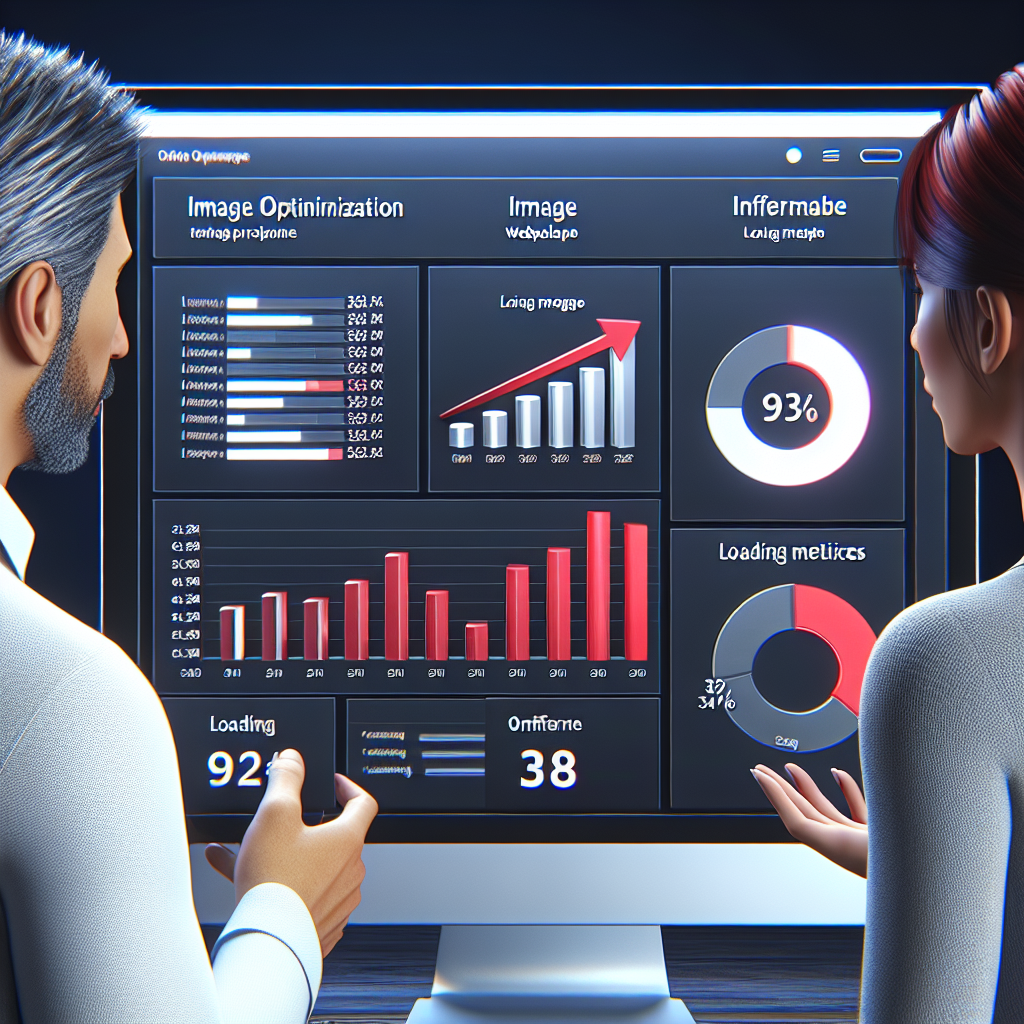Enhance Your Websites with Effective Image Optimizations and Speed Up Performance

How to Speed Up Your Website by Optimizing Images

Are you tired of watching your website load slower than a snail on a lazy Sunday? ⭐ Well, it’s time to take action! Did you know that a staggering 90% of users abandon a website if it takes more than 3 seconds to load? Thats the reality when images are not optimized. Let’s dive into the world of image optimization and discover how to speed up your website by optimizing images.
What Does Image Optimization Involve?
At its core, image optimization is about reducing the size of your images without compromising on quality. This process often involves:
- Choosing the right format (JPEG, PNG, or GIF) ⭐
- Resizing images to fit the dimensions of your web design
- Using tools like Photoshop, GIMP, or online compressors to minimize file sizes
- Implementing lazy loading to enhance performance further ⭐
Let’s look at these techniques in action. For instance, a leading online store, after optimizing their images, saw a 20% increase in user engagement. This meant more potential customers going through their products instead of leaving out of frustration!
Why Optimization Matters
Imagine youre planning a big party and your guests are waiting for you to serve the snacks. If you take too long, theyll leave and reconsider whether to RSVP for your next event. Similarly, for your website:
- Faster load times enhance user experience. Studies show that websites that load in under 2 seconds can improve their conversion rates by up to 40%. ⭐
- SEO benefits: Google considers site speed as an essential ranking factor. By speeding up your website through image optimization, you’re not just improving user experience; you’re enhancing your visibility on search engines!
- Reduced bounce rates: By improving loading speeds, users will stay longer on your site and explore more pages, which can lead to higher sales and engagement.
Real Scenarios: Clients Who benefitted from Image Optimization
Let’s hear from a client, Maria, who runs a boutique. Before contacting us, her website’s load time was around 6 seconds. Customers complained frequently, and her sales were stagnant. After engaging with our team at artivale.com, we optimized her images and integrated a few performance enhancements. Within weeks, Maria reported that users were staying longer, and she observed a remarkable 35% increase in sales! ⭐️
This kind of success story is what we strive for at artivale.com. With over 20 years of experience in the industry, our professional specialists guarantee a complete solution to all your web performance needs.
Expert Advice on Managing Image Optimization
To ensure your website remains competitive, here are a few expert tips:
- Use descriptive filenames for images instead of generic ones (e.g., "blue-shoes.jpg" is better than "IMG_12345.jpg").
- Utilize alt text for images; this not only provides better SEO but also enhances accessibility for users with disabilities.
- Regularly audit your images and delete or replace any that arent performing well, ensuring a constantly optimized website.
If youre ready to revolutionize your website and enjoy fast load times and delighted customers, give us a call at [email protected]. Speak with our customer relations manager, Alexandra, who can guide you through our services and solutions. Dont let slow images hold your business back — reach out to us today!
| Image Type | Recommended Format | Average File Size | Best Use Case |
|---|---|---|---|
| Photographs | JPEG | 100-500 KB | Product images, hero banners |
| Graphics | PNG | 50-400 KB | Logos, icons |
| Animations | GIF | 100 KB - 1 MB | Fun graphics, website banners |
| Scalable Graphics | SVG | 10-100 KB | Logos, illustrations |
| WebP | WebP | 50-300 KB | Responsive images, faster load times ⚡ |
| Backgrounds | JPEG or PNG | 200-600 KB | Site backgrounds, banners |
| Large Graphics | JPEG | 500 KB - 2 MB | Banners, hero images |
| Icons | SVG | 5-20 KB | Navigation menus, buttons |
| Infographics | PNG or JPEG | 500 KB - 1.5 MB | Educational content, sharing |
| Interactive Graphics | SVG | 20-200 KB | Charts, graphs ⭐ |
What Does Image Optimization Involve?

Have you ever wondered why some websites load in a flash while others feel like they’re stuck in a time warp? ⭐ Well, the secret often lies in how they handle their images. Let’s break down what image optimization involves and explore effective techniques that boost loading times!
Understanding Image Optimization
At its core, image optimization isn’t just about reducing the file size; its about making your images web-friendly without sacrificing quality. This means ensuring that images are not only compressed but also meet the right specifications for your website.
Here’s why this matters: According to a recent study, pages with optimized images load up to 40% faster than those that don’t. ⭐ This speed can dramatically improve user experience, making it more likely that your visitors will stay on your site longer.
Key Techniques for Optimizing Images
Let’s explore some proven techniques that can make a huge difference in your website’s performance:
- Choosing the Right Image Format: Different formats offer advantages depending on your needs. For example, JPEG is ideal for photographs, while PNG is best for images that require transparency. Using the right format can significantly reduce load times. ⭐️
- Compression: Compressing images reduces their file size. Tools like TinyPNG, ImageOptim, or even Photoshop can help you compress images while retaining their visual quality. Did you know that a well-compressed image can go from 1 MB to 100 KB with minimal quality loss? That’s a game-changer!
- Image Dimensions: Always resize images to fit the required dimensions before uploading them. Uploading a large image and relying on HTML or CSS to resize it is inefficient. For instance, if your webpage requires images that are 300x200 pixels, uploading a 2000x1500 pixel image is like using a sledgehammer to hang a picture. ⭐
- Lazy Loading: Implementing lazy loading means that images load only when they are in the user’s viewport. This can greatly reduce initial loading time, especially for pages heavy with images. Imagine a guest waiting for their drink while you pour them at the bar — they only receive their drinks when they make it to the front!⭐
- Alt Text: Don’t underestimate the power of descriptive text! Alt text improves SEO and provides context for screen readers, hence enhancing accessibility. It’s like giving a detailed description of a painting to someone who cannot see it. ⭐
Let’s Get Practical: Examples of Successful Image Optimization
To truly understand the impact of these techniques, let’s look at some real-world scenarios. Consider a local bakery that launched their website. Initially, their images were heavy and unoptimized, leading to a slow-loading site. After implementing image optimization techniques, the bakery saw a remarkable improvement: their load time went from 6 seconds to just 2.5 seconds! As a result, they reported a 50% increase in online orders. ⭐
Another client, a tech startup, utilized lazy loading for their portfolio images. Visitors previously experienced the frustration of waiting to see projects. After implementing lazy loading, their bounce rate dropped by 30%. That means more engaged users were appreciating their work, leading to increased inquiries for their services! ⭐
Conclusion: Ready to Optimize Your Images?
Image optimization isn’t just a technical detail; it’s a crucial step to enhancing user experience and maximizing your website’s potential. If you’re ready to transform your website performance and keep your visitors happily engaged, give us a call at [email protected] or visit us at artivale.com. Our expert team, led by customer relations manager Alexandra, is here to help you every step of the way. Dont let heavy images bog down your success—reach out and optimize today!
Why You Should Prioritize Image Optimization

Have you been putting off image optimization for your website? You’re not alone! Many businesses underestimate the power of optimized images, often getting trapped in common myths that undermine their online performance. Let’s break down why you should prioritize image optimization and dispel those misconceptions for a future-ready website! ⭐
Common Myths About Image Optimization
Let’s tackle a few prevalent myths surrounding image optimization. Understanding these can clear the fog surrounding why this practice is essential!
- Myth 1: Image Optimization is Only for Large Websites: This couldn’t be further from the truth. Whether you’re running a small personal blog or a large e-commerce site, optimizing your images is vital. Even small images can slow down your site considerably, affecting user experience and conversion rates. ⭐
- Myth 2: Compressing Images Means Sacrificing Quality: Many believe that compressing images leads to poor visuals. In reality, modern compression techniques maintain quality while reducing file sizes. It’s like squeezing a sponge — you can still keep it wet without over-saturating it! ⭐
- Myth 3: Image Optimization is a One-Time Task: Some assume that once they optimize their images, they’re set for life. In reality, as you add new images or your website evolves, you must continually assess and optimize for better performance.
The Case for Optimizing Images
Now that we’ve dispelled those myths, let’s focus on the critical reasons to prioritize image optimization:
- Enhanced User Experience: Fast-loading images create a smoother browsing experience. A website that loads quickly retains user attention. Research shows that 47% of consumers expect a site to load in less than 2 seconds. Don’t lose that potential traffic because of slow images! ⭐
- Improved SEO Rankings: Search engines like Google favor websites that load quickly. By optimizing your images, you not only improve load times but also enhance your site’s visibility. If you want to climb the search rankings, image optimization is a foundational step. ⭐
- Increased Conversion Rates: A faster website leads to higher engagement, which typically results in more conversions. In fact, companies that prioritize load speed can see conversion boosts of up to 40%. Thats a lot of missed revenue if you don’t act! ⭐
- Reduced Bandwidth Costs: Images often represent a significant portion of a website’s total data size. By optimizing them, you can drastically reduce bandwidth usage, saving costs, especially for sites with high traffic! ⭐
Real Stories: How Optimization Changed the Game
Let’s bring this all to life with some real-world examples. A small local restaurant invested in image optimization after realizing that their website was painfully slow. By optimizing their menu images and promotional graphics, their site speed improved dramatically, and they saw a 25% increase in online reservations within just a few weeks! ⭐️
Another example involves an online clothing retailer that struggled with high bounce rates. After prioritizing image optimization, they witnessed a staggering drop in load times, leading to a 30% boost in sales. Optimized images played a pivotal role in keeping shoppers engaged and increasing their checkout rates! ⭐️
Preparation for the Future
The digital landscape is ever-evolving. As technology improves, consumers will expect faster and more seamless experiences. By prioritizing image optimization today, you’re preparing your website to handle tomorrow’s demands. Why wait until performance issues escalate? Get ahead of the curve! ⭐
If you’re ready to turbo-charge your website with image optimization, contact our expert team at artivale.com. Give us a call at [email protected] to discuss how we can help you unlock your website’s full potential! Our experienced professionals, led by customer relations manager Alexandra, are here to guide you every step of the way. Don’t fall behind — prioritize optimization now!
Submit your details in the form and our team will personally get in touch with you within the next business day to discuss your needs
